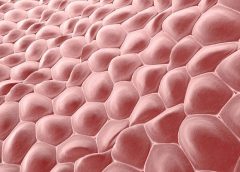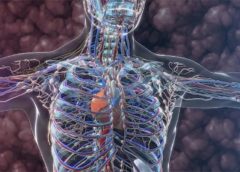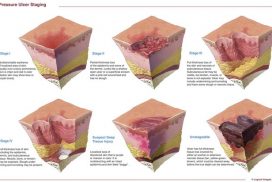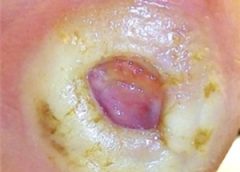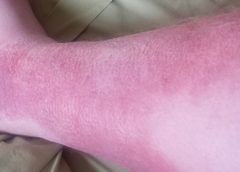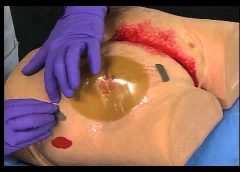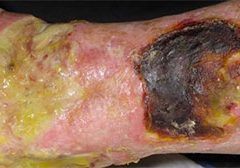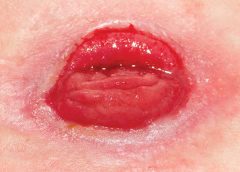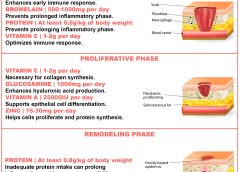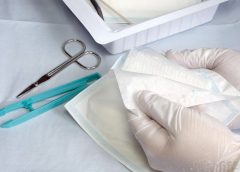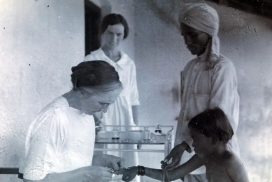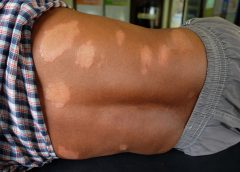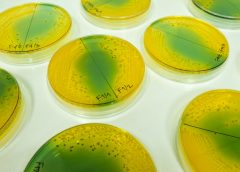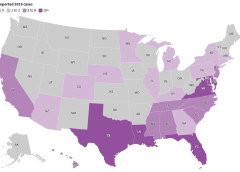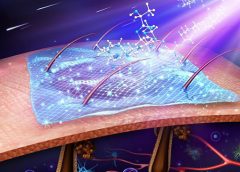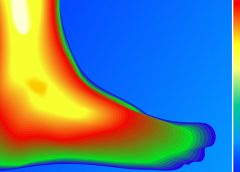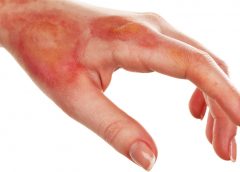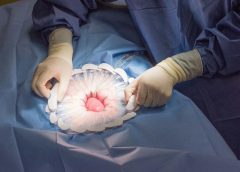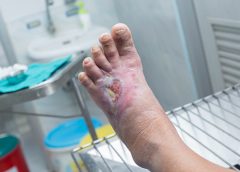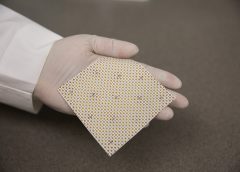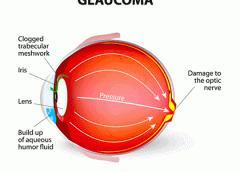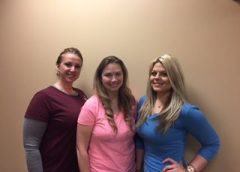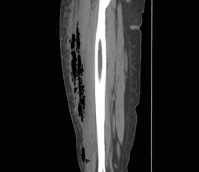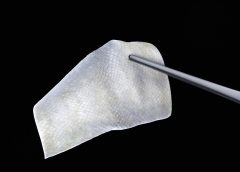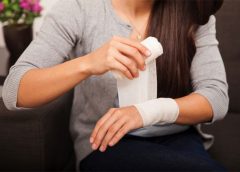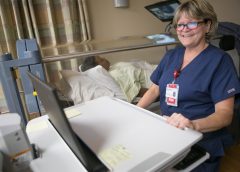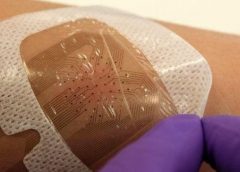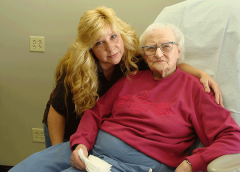Scientists at Ohio State University have developed a new method that has the capability of changing the body’s existing cells into new cells to promote healing. The method, called Tissue Nanotransfection (TNT), reprograms cells through a device that uses nanotechnology. The way it would work: First, doctors would apply a light electrical stimulation to the surface of the skin. They would then place a small chip about the size of a cuff link onto the site of the wound. In less than a second, this chip would deliver reprogramming factors (pre-programmed DNA or RNA) non-invasively into living skin cells via a high-intensity, focused electric field, converting them into whatever type of cells a scientist or doctor may choose. (more…)
Read MoreSearch Results for: is
NYU docs are using machine learning to stop a stealthy disease before it’s too late
Researchers at NYU’s Tandon School of Engineering have teamed up with those from the university’s Rory Meyers College of Nursing to develop a machine-learning algorithm that could help detect a lymphatic system disease before doctors are able to.
There is no cure for lymphedema, only physical exercises that can keep the symptoms in check. (more…)
Read MoreSearch Wound Care Advisor
3 reasons why cornea is the new Glaucoma
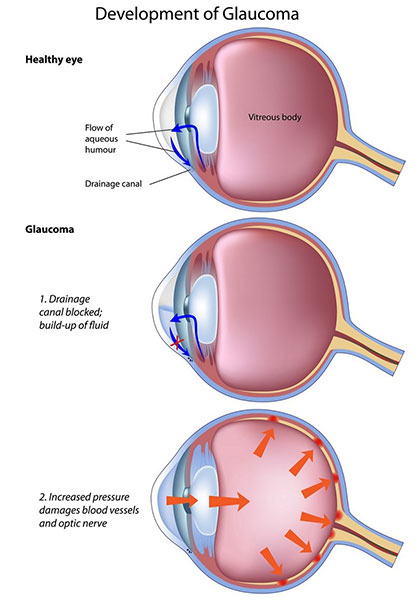
Over the past few years, this pace of change has been very evident in glaucoma, where minimally invasive procedures have greatly diminished the frequency of trabeculectomy and tube shunt procedures. In this issue of OSN, our cover story focuses on a specialty that’s now moving as quickly as glaucoma. And here are three reasons I believe cornea will continue to be the “next big thing” in eye care: (more…)
Read MoreThree registered nurses pass National Wound Care course
Three registered nurses (RN) at Panhandle Home Health have passed the National Wound Care & Ostomy Certification Course & Exam (WCC) as part of Panhandle Home Health’s Wound Care Initiative, started in 2013 with a single WCC-certified RN, Cathy Reifer. In 2015, WISH (Women Investing in Shepherd) awarded their inaugural grant to a regional nonprofit, Panhandle Home Health. This grant of $26,250, along with additional private donations and grants, has allowed thirteen nurses to participate in the intensive, week-long training course. These RNs are prepared to provide specialized consultation and a unique supervisory level of clinical expertise in wound assessment and the specialized care involved for patients. Their training involves differentiation of wound types and the appropriate care; recognizing the effects of cancer, heart disease, diabetes, or COPD on wound healing; understanding care products and their implementation; wound-healing techniques; and patient education. (more…)
Read MoreNecrotizing Fasciitis: Pearls & Pitfalls
A 39-year-old woman presents to the ED with leg pain and fever. She initially noted redness and pain above her knee 2 weeks ago and was evaluated at an outside hospital. She completed a 10-day course of oral antibiotics for cellulitis. Over the last two days, she has had progressive leg swelling of her entire right thigh. The pain is now so severe that she is having difficulty walking. Her past medical history is negative for diabetes mellitus, chronic liver disease, or alcohol and IV drug use.
On exam, she is febrile to 102.7 F, heart rate is 96 bpm, and blood pressure is 112/65. She has a 12 cm area of faint erythema on her right thigh and tenderness to palpation of her entire right leg with diffuse edema. There is no ecchymosis or bullae formation. (more…)
Read MoreFish Skin for Human Wounds: Iceland’s Pioneering Treatment
The FDA-approved skin substitute reduces inflammation and transforms chronic wounds into acute injuries.
Six hours north of Reykjavik, along a narrow road tracing windswept fjords, is the Icelandic town of Isafjordur, home of 3,000 people and the midnight sun. On a blustery May afternoon, snow still fills the couloirs that loom over the docks, where the Pall Palsson, a 583-ton trawler, has just returned from a three-day trip. Below the rust-spotted deck, neat boxes are packed with freshly caught fish and ice. “If you take all the skins from that trawler,” says Fertram Sigurjonsson, the chairman and chief executive officer of Kerecis Ltd., gesturing over the catch, “we would be able to treat one in five wounds in the world.” (more…)
Read MoreContributing to this website
Share your wound care insights and knowledge through WoundCareAdvisor.com
Consider contributing pertinent, useful information that health care professionals can utilize in the wound care practices
Sometimes we all think “It would be great to share this information with my peers”. WoundCareAdvisor.com invites you to do just that. . .share best practices, interesting case studies, practice information such as assessment techniques or documentation tips and more through our popular website. (more…)
Read MoreSmart bandage uses nanosensors to track how a wound is healing
Bandages are intended to keep a dressing secure and clean in order to reduce healing time and infection rate. However, they may be about to get a new use-case, courtesy of a project from the United Kingdom’s Swansea University Institute of Life Science.
What researchers there have been working on is a new smart bandage capable of tracking how a wound is healing and sending that data back to doctors, via 5G technology. To do this it would employ tiny “nanosensors” able to fit comfortably within the fabric of regular bandages. (more…)
Read MoreAtrium Medical Center division earns award for clinical excellence
MIDDLETOWNThe Wound Care Center and Hyperbaric Services at Atrium Medical Center recently was recognized with a national award for clinical excellence.
The Center of Distinction Award was presented by Healogics, the nation’s leading and largest wound care management company. The center was also honored with the Healogics President’s Circle Award.
The awards recognize outstanding clinical outcomes for 12 consecutive months, including patient satisfaction higher than 92 percent, and a wound healing rate of at least 91 percent in less than 31 median days. (more…)
Read MoreSmart bandages which tell doctor how wound is healing to begin trials
Smart bandages which can detect how well a wound is healing and send a progress report to the doctor will be trialled within the next year, scientists have said. The dressings are fitted with tiny sensors which can pick up blood clotting, or spot infections, and wirelessly send data back to a clinician. Swansea University, which is hoping to trial the bandages within 12 months, said the new technology could offer a personalised approach to medicine.
Currently patients with wounds are advised to return to the doctor in a certain amount of time. But each case may need a longer time to heal, or may have become infected before the visit. (more…)
Read MoreMorrison Community Hospital offers specialized Wound Care
Wound care is a specialized form of treatment that focuses on helping patients recover from all types of wounds, both acute and chronic (ongoing). The most common types of wounds are those that result from acute injuries, surgical procedures, diabetes, and pressure or bed sores. Wounds can also result from radiation procedures that are part of a treatment plan for cancer, and they can be a result of vascular disorders. (more…)
Read More
